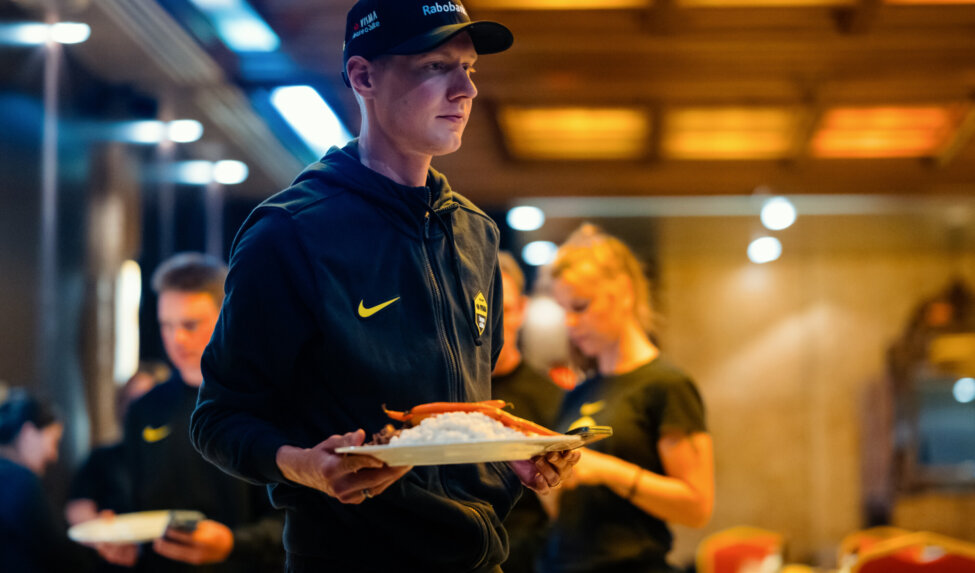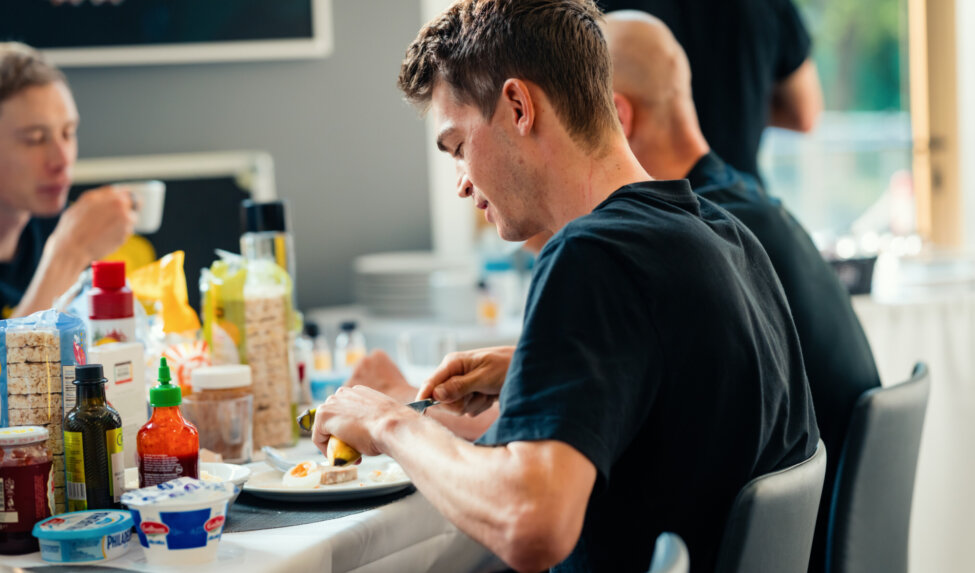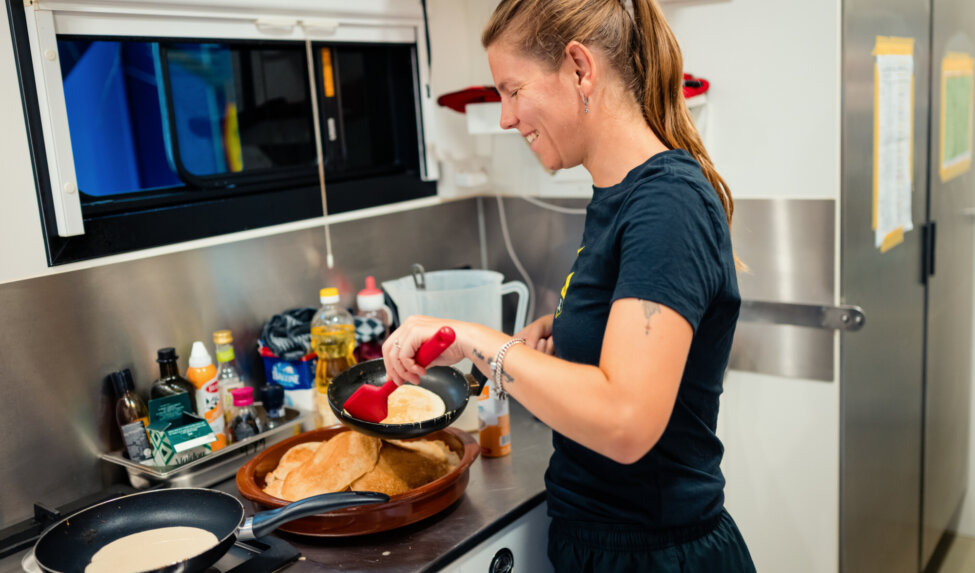Energy on your plate: what riders eat before and after strength training
Top performance does not come from just training on the bike. Other aspects such as the right nutrition and strength training also play an important role. Today you will find out what exactly a power training session of our riders consists of and what nutrition is consumed before and after such a training session. Read more in our Jumbo Food Friday below.
How often our riders do strength training depends on the training period. In the winter, the focus is on strength building, both on and off the bike. On average, they then do strength training twice a week with familiar exercises such as squats, lunges and deadlifts.
The frequency and intensity of exercises varies from rider to rider. For example, a sprinter like Olav Kooij trains with quite heavy weights, while a climber like Steven Kruijswijk focuses mainly on coordination exercises without weights. For a climber, it is important to stay light and fast, so too much muscle mass is not desirable. A sprinter, on the other hand, needs explosiveness, for which muscle mass is actually beneficial.
During the racing season, maintaining strength is important, but heavy strength training is not scheduled to prevent muscle soreness and keep the legs in optimal condition. During this period, our riders do light strength training once a week on average.
Before strength training, our riders eat a carbohydrate-rich meal combined with protein. Depending on the intensity of the training, carbohydrates are sometimes also supplemented during training with, for example, a sports drink from Amacx.
After strength training, recovery is important and protein plays a vital role in this. Strength training causes small tears in the muscles, which become stronger with proper recovery. Proteins are essential here. Carbohydrates are also replenished. An example of a recovery meal is bread with chicken breast and some low-fat cottage cheese.
Jumbo is the ‘Official Food Partner’ of Team Visma | Lease a Bike. They supply us with high-quality food that we use to prepare delicious dishes. Thanks to Jumbo, our riders get the best nutrition for optimal performance.
Want to find out exactly how much you should eat? The FoodCoach App will help you focus and translate your nutrition recommendations into actual food and meals on your plate.
The Athletes FoodCoach Premium app can be downloaded from the App Store or Google Play Store and then used in conjunction with a subscription.









